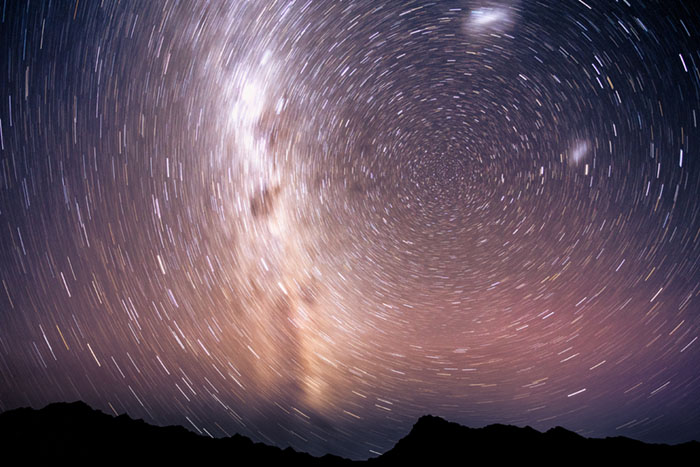THE QUESTION

Dear EarthTalk: What are “dark sky havens” and are there any near me? —D. Morris, Troy, MI
A bright moon hangs over the clear, terrestrial night sky permeated by winking stars, illuminating the town below with various hues of blue. While some can only fantasize of these beautiful night settings, these nighttime skies do in fact exist—in what is commonly known as “dark sky havens.”
In considering the necessity of these dark sky havens, we must first examine why most night skies are not all like this in the first place. In most populated, industrialized areas, artificial light from sources ranging from streetlights to factories to commercial properties cause intensive light pollution—casting a dusky yellow stain over the sky’s natural glow. This excessive artificial light cannot only harm wildlife and the earth’s atmosphere, but also people. For example, blue LED light can disrupt sleep rhythm and increase risk of cardiovascular disease and cancer, according to the American Medical Association. Thus, many environmental advocates have pushed for state-level legislation on limiting artificial light, particularly in places like Colorado.
In addition to local legislation to restrict light pollution, acquiring a dark sky status requires direct effort from an entire community. While local governments need to measure light levels regularly and curtail public lights, community residents must reduce their own light usage—especially for any outdoor lighting that can spread to other properties. On a wider scale, residents can implement smarter, greener lighting with LED technology, which can reduce both your electricity bill and carbon footprint by maximizing energy efficiency, which consequently lowers greenhouse gas emissions from power plants.
Reducing light pollution and creating dark sky havens can be important elements in environmental preservation, economic development and public health. In many rural areas, dark sky initiatives promote tourism for stargazing and meteor-shower watching—luring more visitors and thus more money. Even more, preserving natural nighttime darkness is a worthwhile investment for public well-being. “A view of the night sky can soothe the soul,” says John Barentine, astronomer and policy director of International Dark-Sky Association. “In an era when so many people are suffering from the sensory overload of modern life, as well as what psychologists are calling ‘nature deficit syndrome,’ the night sky offers calm, quiet contemplation.”
Though the International Dark-Sky Association’s standards for managing artificial light are high and certification can take years, dark sky zone applications have expanded widely in Colorado, including the towns of Crestone, Cuchara, Paonia, Pagosa Springs, Naturita, Nucla and La Veta. In the surrounding Rocky Mountain region, towns in states like Arizona, Idaho, Montana, Nevada, New Mexico, Utah, and Wyoming have filed at least 10 applications for dark sky certification. Along with the 25 dark sky towns in the U.S. that you can visit, there are also 77 dark sky designated parks around the nation where you can lay out a blanket after sunset and bask in the nocturnal wonders of starry nights.
CONTACTS
International Dark-Sky Association
“In rural Colorado, a growing push to preserve dark skies as artificial light spills out of cities“
“Four more Colorado towns certified as ‘dark sky’ havens“
EarthTalk® is produced by Roddy Scheer & Doug Moss for the 501(c)3 nonprofit EarthTalk.
See more at https://emagazine.com.
To donate, visit https//earthtalk.org.
Send questions to: question@earthtalk.org.
